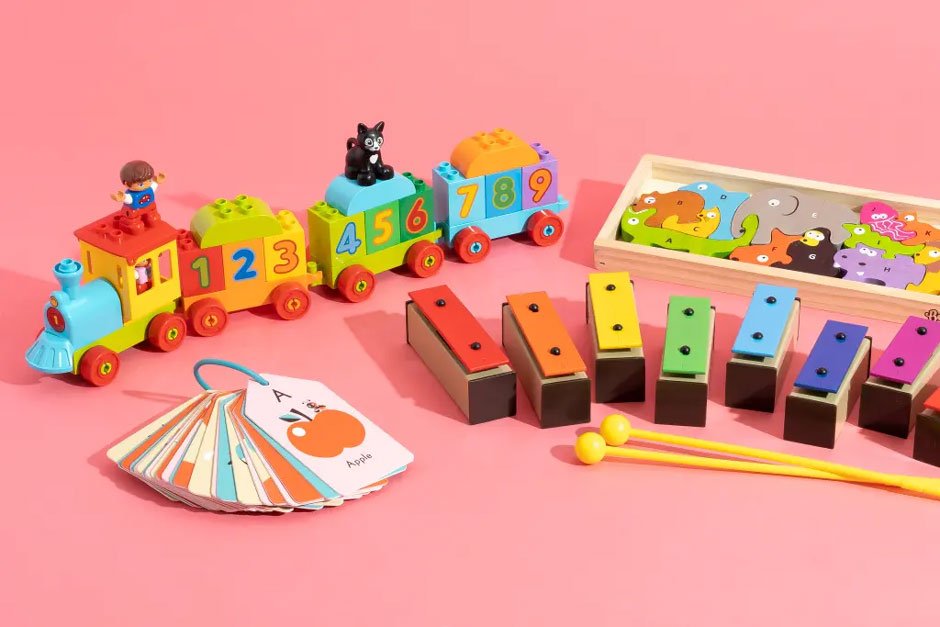 Finding presents that kids use again and again can feel hard. This guide shares the best gift ideas for kids that match real interests, spark play, and last beyond the first week.
Finding presents that kids use again and again can feel hard. This guide shares the best gift ideas for kids that match real interests, spark play, and last beyond the first week.
A great gift does two things. It fits a child’s stage. It invites open play. The ideas below are simple, durable, and easy to personalize. Use them to pick gifts that get used, shared, and loved.
How to Pick the Best Gift Ideas for Kids
Start with what the child does most days. Notice how they spend their free time. Match the gift to that habit, and you will see more play. If your gift includes a photo, art, or a memory, The Dream Frames can turn it into a ready-to-display piece that makes a kid proud.
Focus on these quick checks:
- Open-ended play: Can the toy be used in many ways, not just one?
- Age fit: Check the age range and safety notes on the box.
- Durability: Choose solid parts that can handle drops and rough play.
- Space: Pick sizes that fit the home or room.
- Interests: Tie the gift to what the child talks about and enjoys.
Tip: If you are unsure, ask a parent for two or three current interests. That short list will guide you to a hit.
Top 10 Gift Ideas Kids Will Play With
These picks work across ages and budgets. They invite repeat play and can grow with the child.
1) Open-Ended Building Sets for Creative Play
Blocks and magnetic tiles spark imagination. Kids build towers, bridges, and small worlds. These sets grow as kids learn. Little ones stack and sort. Older kids design stories and structures.
What to look for:
- Large pieces for toddlers
- Strong magnets and sturdy edges
- Simple shapes that mix with other toys
Real-world example: Sam, age 4, used tiles to build a city each weekend. The same set became a zoo, a garage, and a castle over time.
2) Pretend Play Kits and Dress-Up
Pretend play builds language and social skills. A doctor kit, a chef set, or a mini tool kit can turn a room into a scene. Costumes add to the fun. Keep pieces simple and safe.
Ideas:
- Chef apron with felt food
- Vet kit with a plush pet
- Explorer hat with a map and a small compass
Tip: Store parts in a labeled bin so kids can clean up and find them fast.
3) Art Supplies With Display Worthy Results
Art lets kids show feelings and ideas. Choose quality paper, washable paints, and bold markers. Add a small tabletop easel. Finish the experience by displaying their work. A clean frame from The Dream Frames can turn a drawing into a keepsake and motivate more art.
Starter set:
- Heavy paper pad
- Washable paints and brushes
- Bold markers and oil pastels
- Simple frame for favorite pieces
Example: Mia, age 7, kept drawing because her parents framed one piece each month. Seeing her art on the wall fueled her next idea.
4) STEM and Maker Kits by Age
STEM kits turn curiosity into learning. Pick kits that match age and skill.
- Ages 5 to 7: safe science kits with big pieces, beginner snap circuits
- Ages 7 to 9: simple coding robots, beginner woodworking kits with soft wood
- Ages 9 to 12: build-your-own circuits, solar cars, basic 3D pens
Look for clear steps, big pictures, and easy cleanup. Kits that can be rebuilt get more use.
Case study: Theo, age 9, built a solar car, then tried new layouts to race faster. He learned by testing, not just reading.
5) Outdoor Play Gear That Gets Kids Moving
Active play supports balance and mood. Choose a gear that fits your space.
- Small yards: jump rope, soft frisbee, chalk, beanbag toss
- Parks: kite, soccer ball, bubble wands
- Driveways: balance bike or scooter with helmet and pads
Make it easy to grab and go. A tote with the gear near the door helps kids play more often.
6) Board Games and Puzzles They Can Grow With
Games teach turn-taking, strategy, and patience. Pick quick games for weekdays and longer ones for weekends. Cooperative games let the group win together and keep the mood light.
Tips:
- Under 6: picture-based matching and simple puzzles
- 6 to 8: quick card games, cooperative adventures
- 9 to 12: strategy games with light rules, 500 to 1,000-piece puzzles
Pro tip: Add a snack and a scoreboard. Kids love to see progress over time.
7) Books and Reading Nooks That Invite Calm
A small reading nook makes books feel special. Add a soft pillow, a basket of picks, and a clip-on light. Choose stories tied to hobbies or heroes the child likes.
How to make it stick:
- Rotate 5 to 8 books each month
- Mix picture books, comics, and early chapter books
- Frame a favorite quote or cover using The Dream Frames to make the nook feel like a tiny library
Real-world example: Ava, age 6, read more when her corner got a lamp and a framed book cover of her favorite story.
8) Starter Musical Instruments and Rhythm Kits
Music builds focus and joy. For young kids, pick rhythm kits with shakers, a small drum, and bells. For older kids, try a ukulele, keyboard, or beginner guitar.
Make it friendly:
- Include a simple chord chart or a one-page song
- Set a 10-minute play time after school
- Record the first song and frame a small photo from that session to celebrate the start
9) Room Decor and Memory Gifts Kids Help Create
Kids love seeing their wins. Let them pick a poster, a wall map, or a small shelf for trophies. Print a favorite photo with a short caption. A clean frame from The Dream Frames can turn school art, team photos, or a map of a dream trip into decor they own.
Room ideas:
- Growth chart with yearly marks
- Corkboard for badges and pins
- Framed family photo with a one-line note
Example: Diego, age 8, helped hang a framed team photo. He points to it and tells visitors about the final game.
10) Experience Gifts With Tangible Tokens
Memories last. Pick a pass or class tied to the child’s interest. Pair it with a small item they can hold now.
- Animal lover: zoo pass with a plush animal
- Maker kid: workshop pass with a tool apron
- Nature kid: state park pass with a trail map
Print a simple “ticket” and frame it for their room. After the trip, swap in a photo from the day.
Budget and Age Guide for Gift Ideas for Kids
Plan your spending first. Then choose a gift that fits the child’s stage.
Budget ideas:
- Under 25 dollars: art pad and markers, jump rope, classic picture book, puzzle
- 25 to 50 dollars: magnetic tiles starter, rhythm kit, beginner board games, costume set
- 50 to 100 dollars: larger building sets, science kits, scooter with pads, multi-game bundle
- 100 dollars and up: digital photo frame for family albums, membership passes, premium instruments
Age guide:
- Toddlers 1 to 3: large blocks, push toys, shape sorters, board books. Avoid small parts.
- Preschool 3 to 5: pretend sets, simple puzzles, washable art, balance bikes.
- Early school, 6 to 8: starter STEM kits, card games, chapter books, scooters.
- Tweens 9 to 12: advanced building, strategy games, instruments, maker tools.
Safety notes:
- Check labels for age ranges and small parts warnings.
- Choose non-toxic art supplies marked for kids.
- Add helmets and pads for wheels and bikes.
Personalization Tips That Make Gifts Stick
Small touches make gifts feel special and boost playtime.
- Add a one-line note in your voice.
- Print a photo of the child using the gift and frame it later.
- Use a color the child loves for tags or bins.
- Include a simple challenge card, like build a bridge 10 inches tall.
- If your gift includes art or photos, a clean frame helps the piece look finished and proud on a wall or shelf. That simple step can turn a fun moment into a daily smile.
Presentation Tips That Spark Use
How you give the gift can set up the first play session.
- Unbox and set up the gift before wrapping, so it is ready to use
- Add fresh batteries if needed
- Include a quick-start card with the first three steps
- Place parts in labeled bags or bins for easy cleanup
Pro tip: Leave space on a shelf for the new gift. A ready spot invites repeat play.
Common Mistakes to Avoid With Kids’ Gifts
- Buying for an ideal child, not the real one
- Picking toys with only one way to play
- Ignoring setup and “torage needs
- Choosing items with too many small parts for the child’s age
- Skipping the note that says why you chose the gift
Avoid these, and your present will see more use and fewer dusty corners.
Bringing It All Together: The Role of Memory
Kids light up when they see their work and wins. If you give an art kit, frame a favorite piece. If you give a pass, frame a photo from the day. If you give a book, frame a quote they love. Partners like The Dream Frames can help you pick sizes and styles that fit a child’s room so the memory stays.
Conclusion
Great kids’ gifts invite play, grow with the child, and fit daily life. Choose open-ended sets, pretend tools, art kits, outdoor gear, or experience gifts to child’s real interests. Add one personal touch and plan the first use. Frame the result of their effort so they feel seen and proud. With this approach, the best gift ideas for kids become part of happy routines, not just a moment of unwrapping.


